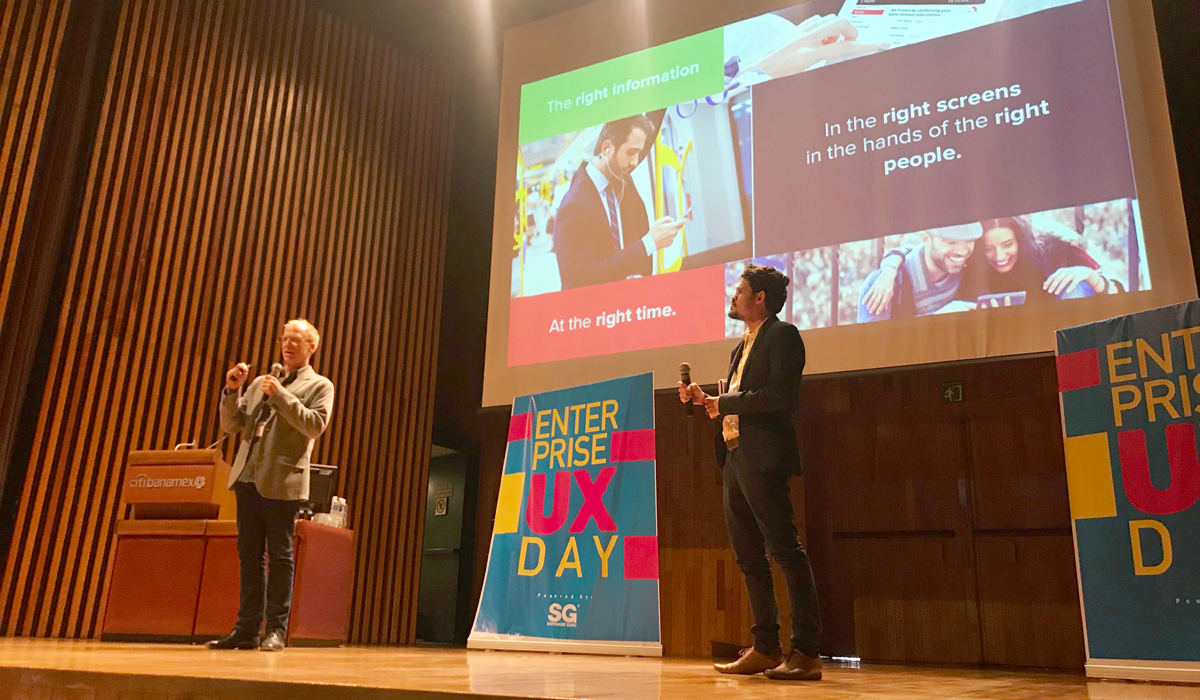Arturo: You’re talking about the methods I love to use most – user journey maps, service blueprints, and ethnographic research. These help companies understand the killer app of any software system: the human.
David: That’s right. You cannot get more strategic than anticipating human behavior and serving human needs. Designers spot new opportunities and shape products and services that fit into human lives and further human goals. We focus organizations on the dynamics that can make or break a value proposition.
Arturo: But it’s still not easy, is it? People in the industry complain about siloed organizations. People observe that the old ways of doing business stop design innovation in its tracks. When it comes to making tradeoffs, UX and design are sacrificed. How can we overcome these challenges?
David: Well it’s a journey. And every journey needs leaders that are committed to investing in design and focus on outcomes versus output.
When I was working at Cooper, we had the opportunity to work with large software companies such as IBM, HP, Sony. One day in the early 2000s, we got a letter from SAP. At first, we thought it was a joke. But it wound up being a game changer.
Arturo: Why? Because it was a letter?
David: Well, yeah. That was weird, to get a paper letter in the mail. Even weirder was the request. SAP sent out this RFP to a dozen companies. They said that their user manuals were getting too big; tried more concise writing, reduce type, reduce margins, etc. But the real problem was not about the manual.
We knew their software sucked because it was poorly designed at every level. So this put us in an awkward position. One familiar to any professional designer. We had the right answer to the wrong question. For us to win this work, we had to convince the client to choose a different problem to solve. A problem that we could solve as interaction designers.
Arturo: How did you convince them to choose a different problem?
David: We told them that we saw a future where manuals would be a thing of the past, by design. Soon we were flying back and forth to Europe, working with SAP’s CEO and Founder. Hasso Plattner. He introduced us to his fellow executives as well as their partner companies. We performed dozens of research and design projects. But more importantly, we taught them what we were doing and why we did it that way. We created a curriculum to teach in a classroom setting, then we taught their teachers to do the same. We helped them set up design centers in Europe and California. And this helped launch the Design Thinking revolution.
And that’s the other big lesson: executive leadership is critical. When the leader is committed to change, things get done.
Leah Buhley recently released a design maturity model report published by Invision that outlines five stages of growth for every design organization. What she found is that for the global companies she surveyed, the vast majority of design work done is instrumental. Surface level work. It’s valuable—people are happy with it—but it’s not going to make you the big money.
As companies climb the maturity ladder, they start to pull ahead of the competition. They begin to see the value of designers acting as connectors to the marketplace and in the company. Then they start to realize that designers can collaborate on architecting business and systems. The companies that get the greatest value are those that use designers as visionaries who are directly influencing the strategic direction of their companies.






